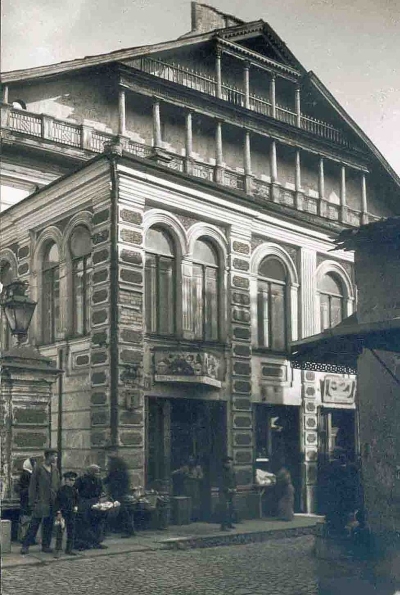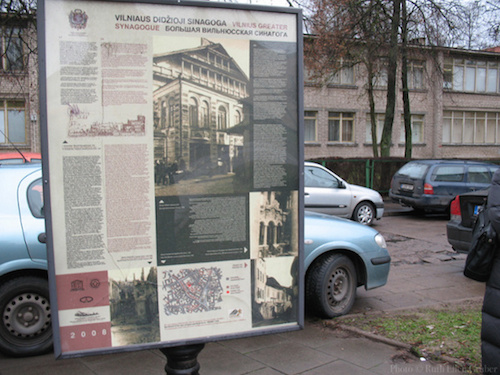from Jewish Heritage Europe

The second season of archaeological excavations is under way at the site of the destroyed Great Synagogue in Vilnius and the surrounding Shulhoyf complex of Jewish buildings. A team of Israeli, Lithuanian and American volunteers began work on July 10 and will continue until July 21.
The objective is to continue last year’s work researching the water system of the complex developed in the 18th century and two mikvaot, ritual baths. Plans are to open “an area … probably near the entrance staircase descending into the synagogue and around the area of the bimah.”
A facebook post said the team on the second day of digging this year had already revealed a tiled structure with a colored floor which may be one of the mikvaot.
The Great Synagogue was built in the 1600s in Renaissance-Baroque style. It became the center of Jewish life in Vilnius (Vilna), towering over the Shulhoyf, a teeming complex of alleyways and other Jewish community buildings and institutions including twelve synagogues, ritual baths, the community council, kosher meat stalls, the Strashun library and other structures and institutions.
It was ransacked and torched by the Nazis in World War II, and the post-war Soviet regime tore down the ruins and built a school on the site.

Information placard in Vilnius at the site of the Great Synagogue.
Describing the aims of this year’s excavations, the project said on its web site:
“During the excavation in Vilnius of the bathhouse and miqve building, a plan, dated to the end of the 19th century, for the reconstruction of the bathhouse was found in the city archives in Vilnius. The plan shows that the bathhouse consisted of two main floors. The plan clearly shows the latrines and the ritual baths, the miqve’ot, in two rooms on the ground floor. The excavation of 2016 was superimposed on the 19th century plans, which in turn were inter-connected with the plan of the Great Synagogue and the shulhoyf. These plans are a very good guide to the architecture of the bathhouse and the miqve and will guide us in our aims in the planned excavation for 2017.
“Indeed, the excavation scheduled for July 2017, will concentrate on two areas in which we see potential to expose significant remains. Firstly we will attempt to excavate the two miqve clearly identifiable on the plan (marked A and B). Secondly we intend to open an area within the synagogue building itself, probably near the entrance staircase (C) descending into the synagogue and around the area of the bimah (D).”
Last year’s dig–directed by Dr. Jon Seligman of the Israel Antiquities Authority and Mantas Daubaras of the Kulturos paveldo išsaugojimo pajegos (Culture Heritage Conservation Authority of Lithuania)–focused on in the area of the bathhouse and miqve in the shulhoyf of the Great Synagogue of Vilna and revealed much about the structure of the site, including “significant remains of buildings [that] included brick walls [and] underground vaults.”
The archaeologists unearthed:
“large quantities of ceramics, the significant find being multichrome glazed stove tiles. These tiles, decorated with heraldic emblems, vegetative details and animals are typical of heating stoves from the 18th to 19th centuries.”
Full story here.

